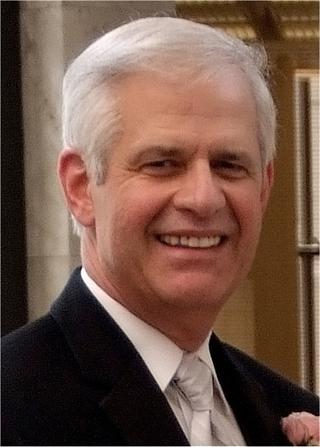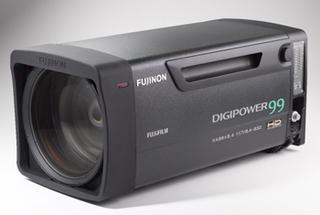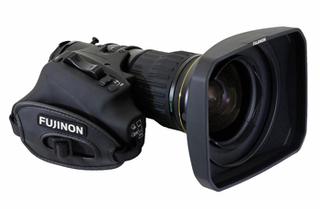Lenses for 4K Shooting: An Interview with Fujifilm's Thom Calabro
WAYNE, N.J. ― Cameras are only part of the acquisition chain for video production, including 4K production. Another critical link is the lens and there hasn't been much talk about 4K lenses. Therefore, Broadcast Engineering Extra posed some questions to Thom Calabro, the director of marketing and product development title at Fujifilm's Optical Devices Division, makers of Fujinon lens products.
Calabro formerly was national sales manager, overseeing sales operations in North, Central and South America, and is based at Fujifilm headquarters in Valhalla, N.Y. Prior to his position at Fujinon/Fujifilm, Calabro held high-level positions with Philips Digital Video Systems and Ikegami Electronics USA.
Thom Calabro, the director of marketing and product development title at Fujifilm's Optical Devices Division BEE: Can a broadcaster reasonably expect that recent lenses bought for HD cameras will work well with 4K cameras? If not, why not?

Calabro: I assume you are referring to 2/3-inch 4K cameras, when they become available. Some early adopters of HD cameras used SD lenses. While these lenses were acceptable in some situations, their limitations soon became apparent. Chromatic aberrations that were unseen in SD showed up, especially in the corners. The same will be true to some extent with HD lenses on 4K cameras. Most material shot on 4K initially will be displayed on HD screens, so for most applications the lens deficiencies will not be a major issue. We recently heard from a customer shooting in 4K with a mix of our PL lenses and a competitor's lenses. The final product was viewed in HD, but an opportunity arose to view the work in 4K, and the results there were dramatic. Even though all lenses were 4K PL, the quality of the Fujinon shots was such that the entire production switched over to entirely Fujinon glass. The lesson here is if you're looking to buy 4K lenses, do your comparative evaluation in 4K.
BEE: If a broadcaster is shopping for an HD lens today, is there anything to look for that will "future proof" the lens for future 4K use?
Calabro: If you want a true 4K lens in 2/3-inch, the short answer is "no." There are lenses today that will perform better than others on 4K. Our XA99x8.4 HD lens has been used in various sporting events, such as the Super Bowl, on a 4K PL camera through the use of a 2/3-inch to PL adapter. This lens produces the best performance under these circumstances. The XA99x is the most recent EFP lens on the market, so it has all the latest technology ― electrical, mechanical, and optical, to perform at the highest level.Another recent lens, the HA18x5.5 ENG lens performs very well in 4K. While we're not claiming this to be a 4K product, I've seen this lens and it's just spectacular. It could be an entrée into 4K.
Fujifilm's XA99x8.4 HD lens BEE: Fujifilm makes a range of lenses for a wide variety of purposes, such as sports, studio, ENG, EFP, feature production, etc. Can we expect the same range of lenses for 4K cameras? Are there any that are more likely than others?
Get the TV Tech Newsletter
The professional video industry's #1 source for news, trends and product and tech information. Sign up below.

Calabro: While it will be difficult to replicate today's range of lenses in 4K, I think eventually it will be done. Not that long ago, we were pushed by the networks to develop a 40x SD lens, and look where we are today. Technology has a way of advancing. Products that seemed impossible a short time ago are now common place.
I believe two areas will advance faster than others: mobile and theatrical production. The mobile business is what led the way in the SD to HD conversion. It will do the same for 4K. The theatrical arena is already converting from film to PL 4K. We have a range of products, like the Cabrio lenses, which were not around a couple of years ago. As more of this type of production converts, you will see more lens products become available.
BEE: In a market where camera resolution goes up as camera price goes down, what does that mean for lens manufacturers? Can you reasonably expect to sell a $25,000 lens for a $6,000 camera? Are there two separate lens markets: one for high-end production and one for day-to-day shooting?
Calabro: Shooters know that the image will not get any better once it leaves the lens barrel. They must keep in mind what they want the final image to look like. The image from a great lens on a good camera will look better than a good lens on a great camera. Instead of looking at the individual costs, you have to look at the entire package. Lens prices do not follow electronics prices. The lenses have to get better every time pixels are added to a given size sensor. The sensor in a 2/3-inch SD camera was 450k pixels. In HD, it became two megapixels. I imagine 4K will be well in excess of those. We try to keep the cost of the lens as low as possible, but as cameras get higher resolution sensors, the price of the lenses will escalate.
We currently have various levels of lenses to fit customer's applications. The differences in these are not only found in the optics, but also in the mechanics and electronics. We know our customers have varying levels of budgets and expectations, so we provide a wide range of choices.
Fujifilm's HA18x5.5 ENG lens BEE: The higher the resolution, the more difficult it is to get sharp focus. Is there anything a lens manufacturer can do to assist the videographer in getting sharp focus?

Calabro: We developed our assisted focus system to do just that, it is called Precision Focus Assist or PF.The PF lens is fitted with a prism and two CCD sensors that read the image and provide an indication in the viewfinder when critical focus is achieved, or it adjusts the lens for the videographer. We'vebeen successful in the church production market with the PF lenses. Quite often people that are manning the cameras on the weekend are volunteers. And it's normal to have to hold a tight shot on the pastor for long periods of time. This can be very tiring, making it difficult to hold critical focus while the pastor walks on the stage. This is also an area where Optical Stabilization helps immensely.
BE: What else should our readers know about 4K lenses?
Calabro: They're coming! We've already had a wealth of experience in designing and producing PL lenses in 4K. Fujifilm will take this experience and develop a wide range of 4K lenses for every market.
Bob Kovacs is the former Technology Editor for TV Tech and editor of Government Video. He is a long-time video engineer and writer, who now works as a video producer for a government agency. In 2020, Kovacs won several awards as the editor and co-producer of the short film "Rendezvous."

